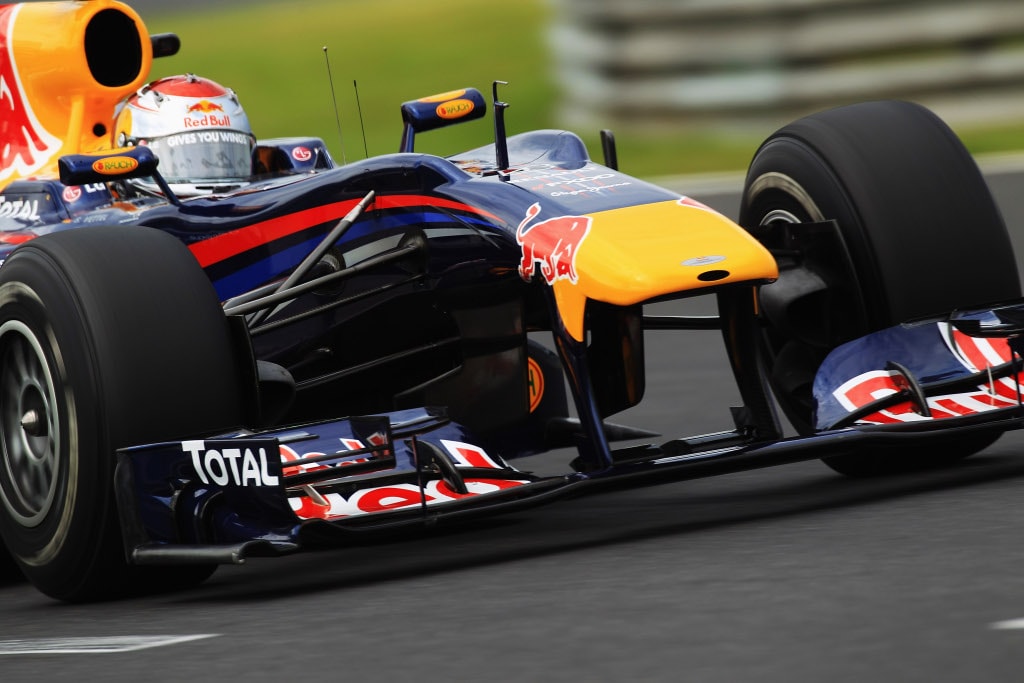According to the recent developments in the “front wings” saga involving Red Bull Racing and Ferrari – but mostly the former team – it seems the endplates of the RB6's front wing are not the only flexible parts on the front of the car. Instead, some photographs shot during the Hungarian Grand Prix have revealed that it may be that the entire nose of the car is flexing towards the ground.
As compared to the other cars on the track, it seems that the nose of Red Bull's RB6 is much closer to the ground, as depicted in the recent German and Hungarian Grands Prix. If the results were less visible in Germany, on the highly technical circuit of Hungaroring the two cars prepared by the Austrian team have put a full second between them and their nearest rivals in both qualifying and race.
Another theory as to why the RB6 cars are so much quicker that their rivals on these types of circuits would be that the entire front floor of the car is bending downwards in corners, while the rear part of the floor is lifting, therefore creating a greater downforce. In such case, the front of the car would be completely legal, as its downward movement would be a logical consequence of the flexible rear floor.
This second theory would mean that even with the new flexible wings tests imposed by the FIA prior to the Belgian Grand Prix, the car would again pass them easily and continue its dominance in the championship.
Shortly after the Hungarian GP, given that Red Bull completely “owned” the track throughout the 3 days of F1 action, the FIA decided to double the load (from 50kg to 100kg) for the wing flexibility tests, amid suspicions that Red Bull and Ferrari found a way to bend their front wings towards the ground “under disproportionately higher loads out on track.”
As compared to the other cars on the track, it seems that the nose of Red Bull's RB6 is much closer to the ground, as depicted in the recent German and Hungarian Grands Prix. If the results were less visible in Germany, on the highly technical circuit of Hungaroring the two cars prepared by the Austrian team have put a full second between them and their nearest rivals in both qualifying and race.
Another theory as to why the RB6 cars are so much quicker that their rivals on these types of circuits would be that the entire front floor of the car is bending downwards in corners, while the rear part of the floor is lifting, therefore creating a greater downforce. In such case, the front of the car would be completely legal, as its downward movement would be a logical consequence of the flexible rear floor.
This second theory would mean that even with the new flexible wings tests imposed by the FIA prior to the Belgian Grand Prix, the car would again pass them easily and continue its dominance in the championship.
Shortly after the Hungarian GP, given that Red Bull completely “owned” the track throughout the 3 days of F1 action, the FIA decided to double the load (from 50kg to 100kg) for the wing flexibility tests, amid suspicions that Red Bull and Ferrari found a way to bend their front wings towards the ground “under disproportionately higher loads out on track.”
